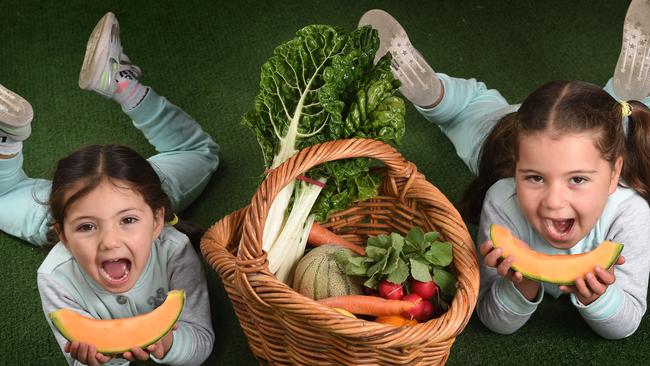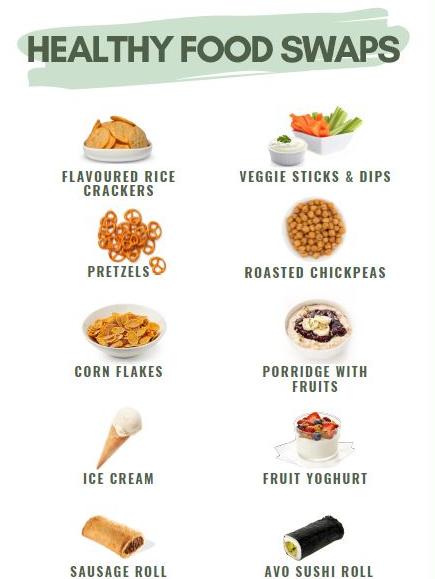Study serves up shock figures on fruit and vegetable consumption
Getting children to eat fruit and vegetables is no easy task, and new research shows the alarming number of kids failing to meet the recommended daily intake. See the tips to get your child eating more.

VIC News
Don't miss out on the headlines from VIC News. Followed categories will be added to My News.
New statistics reveal shockingly low numbers of Australians are eating enough fruit and vegetables.
A report has found 94 per cent of kids and 95 per cent of adults are not eating the recommended daily two serves of fruit and five of vegetables.
The latest national health survey conducted by the Australian Bureau of Statistics classes 25 per cent of children and 67 per cent of adults as overweight or obese.
Nutritionist Lisa Minton said it was vital for parents to develop healthy eating habits early in their children’s lives.

Ms Minton founded the Eat For Life education program, working with schools and preschools to encourage students to have balanced diets.
She said eating fruit and vegetables regularly from a young age helped lower the risk of becoming obese.
“Working with your child now can have a big long-term impact,” Ms Minton said.
“But it’s never too late to improve or change habits.”
RMIT lecturer in nutrition Lisa Newman said a major issue with modern diets was people’s preference for processed foods, particularly for snacks.
“It’s concerning to think that we know how important fruit and vegetables are for a healthy life, yet kids — and adults — are nowhere near meeting those recommendations,” she said.
Time was one of the biggest barriers to getting enough fruit and vegetables, she said.
“The reason we’re relying on those convenient foods are, in a lot of cases, both parents are now working and the amount of time that’s available to prepare food for the family and for lunch boxes has reduced quite significantly.
“It puts a lot of pressure on the family and therefore they rely on these convenience types of food.”


Ms Minton said processed foods tended to be the go-to snacking choice for children.
But there were many ways to change that habit.
“One thing I say to parents is if you don’t put it in there and offer it, kids can’t eat it.
“If you say, ‘My kid doesn’t like vegies,’ I would say cut some vegetables up quite small and pop them in the lunch box, and even if they have a little bit then that’s better than none at all, and you can build it up over time.”
MORE: HOW TO AVOID THE MORTGAGE TRAP
HOW A WIFE GAVE HER HUSBAND THE GREATEST GIFT
INSOMNIAC’S BIZARRE REVENGE ON NOISY NEIGHBOUR
Ms Minton said parents should have fruit and vegetables available as snacks and try to make them appealing.
“Timing is often so important, too,” she said.
“You want to catch them with the vegetables when they’re hungry.
“If they’ve just been out in the park running around it’s a great time to get some vegetables on a platter with some dip.”
The Eat For Life program suggest a range of alternative snacks, such as veggie sticks and dips instead of flavoured crackers, and an avocado sushi roll instead of a sausage roll.
DR LISA NEWMAN’S TOP TIPS TO GET CHILDREN EATING MORE VEGGIES
1. Model good behaviour. If kids see their parents consuming vegetables, they will also be more likely to eat them.
2. Get kids involved. Kids are more likely to eat and try new vegetables when they have been involved in the process, whether it is choosing the vegetables at the supermarket, helping to prepare the meal or growing them in a veggie patch — get them involved.
3. Rather than giving your kids pre-packaged snacks which are generally high in salt, sugar and fat, try giving them vegetables. Studies show that offering kids cut up vegetables before a meal increases their vegetable consumption.
4. Give them vegetables with foods they like or are familiar with. That way they will start associating liked foods with vegetables.
5. When trying to entice children to eat vegetables, try not to use food as rewards for example “if you eat all your vegetables you can have dessert”. Instead use non-food rewards like extra playtime or sticker rewards.


